For a vehicle to have stable steering and good handling, its tires need to have good contact with the road. This is made possible by the suspension system, which is also designed to evenly support the vehicle and reduce shocks from road bumps. It also helps make rides more comfortable.
As part of the suspension system, control arms help the wheels safely follow the contours of the road. For more technical information, you can read our advanced discussion about how control arms work.
Otherwise, continue reading the next section if you want to know what could happen if control arms break.
Driving With Broken Control Arms: What Can Happen

Having damaged control arms and worn bushings or ball joints could cause suspension parts to become misaligned. When this occurs, you may experience issues with steering and handling.
Usually you’ll notice noises first, either while turning, stopping or driving over speed bumps. As for “broken control arms,” the arms themselves almost never break, but they can be bent by direct impact with heavy road debris or, if you’re driving where you shouldn’t, you could ram one of your lower control arms against a boulder, a metal pipe, or a short tree stump you didn’t notice while driving through a field.
An impact that will damage one of your control arms won’t go unnoticed. If a vehicle rams your wheel from the side, it usually bends a lower control arm, but you’ll probably notice that as it happens as well.
Any time you notice sudden changes in the way your car handles or drives, have it checked.
Fortunately, where the bushings are concerned, they’re designed so that even if all the rubber is gone, the control arm will still move the way it should and remain in place, even though it may make all manner of alarming noises.
Actually, you’re more likely to have a ball joint break than a control arm, and the consequences of that can be very serious – and it can happen without warning, so you need to make sure you have your front end parts checked regularly by a shop you trust. If the ball joint and tie rod boots are intact and there is no play in the ball joints or tie rod ends, you probably don’t need these parts replaced.
If you get a large estimate from a shop for front end work, make sure to get second and/or third opinions from other shops without mentioning the previous shop’s recommendations. It’s extremely important to have a good rapport with a local shop that has a good reputation for not selling people stuff they don’t need.
What Causes a Control Arm to Break?
Over time, bushings and ball joints can wear out due to friction, heat, and stress from various loads and movement. They can also degrade from exposure to corrosive or abrasive elements such as road salt, mud, and automotive fluids. The rubber boots are in place to keep these elements out, and if the boots have burst, joint wear accelerates exponentially.
Harsh conditions, like driving on rough terrain, can accelerate the wear and tear of control arm bushings and ball joints.
Bad Control Arm Symptoms
Driving with worn or damaged control arms may lead to safety issues, so it’s best to make sure that control arms remain in good condition. Some signs that a control arm or its bushings and ball joints are starting to fail are:
Strange Sounds
When the bushings or ball joints have become worn out, the control arms may make clunking or banging noises when driving over bumps, or when accelerating or braking.
Steering Issues
The misalignment of suspension components due to bad control arms can result in pulling or veering towards one side.
This issue becomes more apparent when driving over bumps or through rough and uneven terrain.
Failing control arm bushings and ball joints may not be able to hold the steering knuckles firmly, causing the steering wheel to shimmy or steering to feel unresponsive.
Irregular Tire Wear
In addition to causing steering issues, bad control arms can also throw the suspension system out of alignment, leading to irregular tire wear.
Control Arm Replacement
Replacing a control arm can be tricky, particularly if the vehicle’s suspension is already rusted or corroded. Steps like separating the ball joint from the control arm will also be challenging for someone who’s never done it before.

You may find it simple to replace a front lower control arm on a vehicle with a MacPherson strut suspension. But if you’ve got a torsion bar suspension, you’ll need a lot of mechanical knowledge in order to complete this job. Check out this article on how to replace control arms for a detailed step-by-step guide.
You can also check out these videos to get an idea how to replace your control arms:
If you’re unsure about how to proceed, it’s best to have your control arm replaced by a professional.
Control Arm Replacement Cost
The cost of replacing your vehicle’s control arms will depend on several factors, including your vehicle’s make, model, and year, and the type, design, and material of the control arms. If you aren’t planning on replacing it yourself, expect to pay for labor as well.
At CarParts.com, aftermarket control arms can cost anywhere from $2.30 to $3,176. They can be purchased individually or in sets. Meanwhile, replacement parts by original equipment manufacturers are typically only available at dealerships and can cost around 60 percent more.
If you’re planning a do-it-yourself control arm replacement project, you’ll only need to spend on the replacement parts, related hardware, and any tools that you don’t have on hand.

Make sure that the new parts have an exact fit and that you carefully follow the vehicle-specific part repair instructions. Failing to obtain a compatible part and not doing the replacement correctly could result in further expenses.
Also, remember to take your vehicle in for a wheel alignment after replacing the control arms.
Should you decide to go to a professional to have your control arms replaced, expect to shell out anywhere from around $500 to more than $1000. Repairs can cost even more for high-end vehicles, depending on which automotive repair services shop you visit. In some cases, the shop might already include the replacement parts in its initial costing.
A Lesson On Control Arms and Suspension
So, what’s a “control arm” anyway? On many modern vehicles, control arms can be on the front suspension and the rear as well.
But most people think of the front suspension when control arms are mentioned. The front wheel is bolted to a hub that spins on bearings supported by a spindle that is part of the steering knuckle. The number and configuration of control arms depends on the type of suspension the vehicle has.
The steering knuckle is attached on older vehicles to ball joints usually either riveted onto or pressed into the outer ends of upper and lower control arms. The lower control arm is sometimes referred to as a “trailing arm.”
Both control arms on older suspension systems are triangular in shape with two of the three points of the triangle attached to the frame by way of bushings so that each control arm performs sort of like a heavily designed hinge, with two inner bushings, and the side of the control arm nearest the wheel has the ball joint to which the steering knuckle is attached. The control arms always move up and down together since they’re joined to the steering knuckle by the ball joints.
On these older suspension designs, the upper control arm is shorter than the lower control arm, and one of the control arms (it can be the upper or the lower arm) will be supported by a spring, with the other end of the spring attached solidly to an anchor gusset that is welded to the vehicle frame. This is called “Short-Long-Arm” (SLA) suspension.
Steering Axis, Caster Angle, and More
Drawing an imaginary line through the center of each ball joint on a particular wheel (as seen from the front) is the Steering Axis – that’s the axis on which the knuckle (and the wheel) rotates from left to right as the vehicle is being steered by the driver. The measured angle of the Steering Axis is known as “Steering Axis Inclination” (SAI), which is always angled in at the top for stability.
Seen from the side, this same steering axis is regarded as the caster angle – if the lower ball joint is farther forward than the upper ball joint (which it always is unless there’s a problem), then the caster is regarded as POSITIVE. Caster is usually an adjustable angle – Steering Axis Inclination is NOT an adjustable angle. You cannot measure these angles without special equipment.
The steering knuckle has an integral lever or arm that is connected to the steering gear with a ball-and-socket joint that is smaller and lighter than the ball joints so that turning the steering wheel changes the angle of both front wheels simultaneously.
On strut suspension, there is usually (not always) just a lower control arm and one lower ball joint on either side, with no upper ball joint. The upper part of the steering knuckle on these is attached to the strut, which carries the weight of the vehicle very high in the car body, making the vehicle more stable; the steering axis passes through the center of the strut (shock and spring in one assembly), which has a bearing at the top enabling the strut to carry the weight of the vehicle as the steering wheel turns the strut and knuckle.
Many of these strut suspension systems don’t have triangular control arms, so they require an additional brace to stabilize the control arm. This brace can either lead forward or to the rear, but is always attached to the frame on one end and the lower control arm on the other – and is frequently called radius arm or a strut rod.
Honda sedans (and some others) are an exception to this rule – they have strut suspension, but they have upper and lower control arms and two ball joints on each side, with the strut assembly attached to the lower control arm rather than the steering knuckle. On this type of suspension, the steering axis passes through the ball joints rather than through the center of the strut.
Shock absorbers dampen vehicle bouncing as the suspension is working. If you start bouncing your vehicle with your hands on the fender and then stop, if the vehicle bounces more than twice, it needs shock absorbers.
Products Mentioned in this Guide
Shop this Project



Any information provided on this Website is for informational purposes only and is not intended to replace consultation with a professional mechanic. The accuracy and timeliness of the information may change from the time of publication.


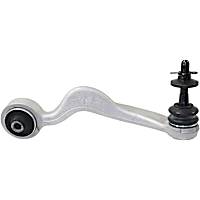 Control Arm
Control Arm
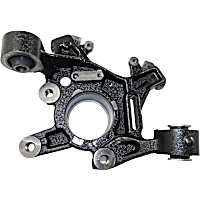 Steering Knuckle
Steering Knuckle
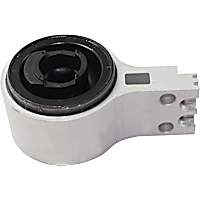 Control Arm Bushing
Control Arm Bushing
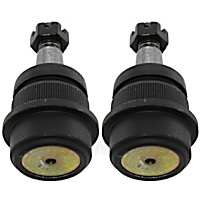 Ball Joint
Ball Joint

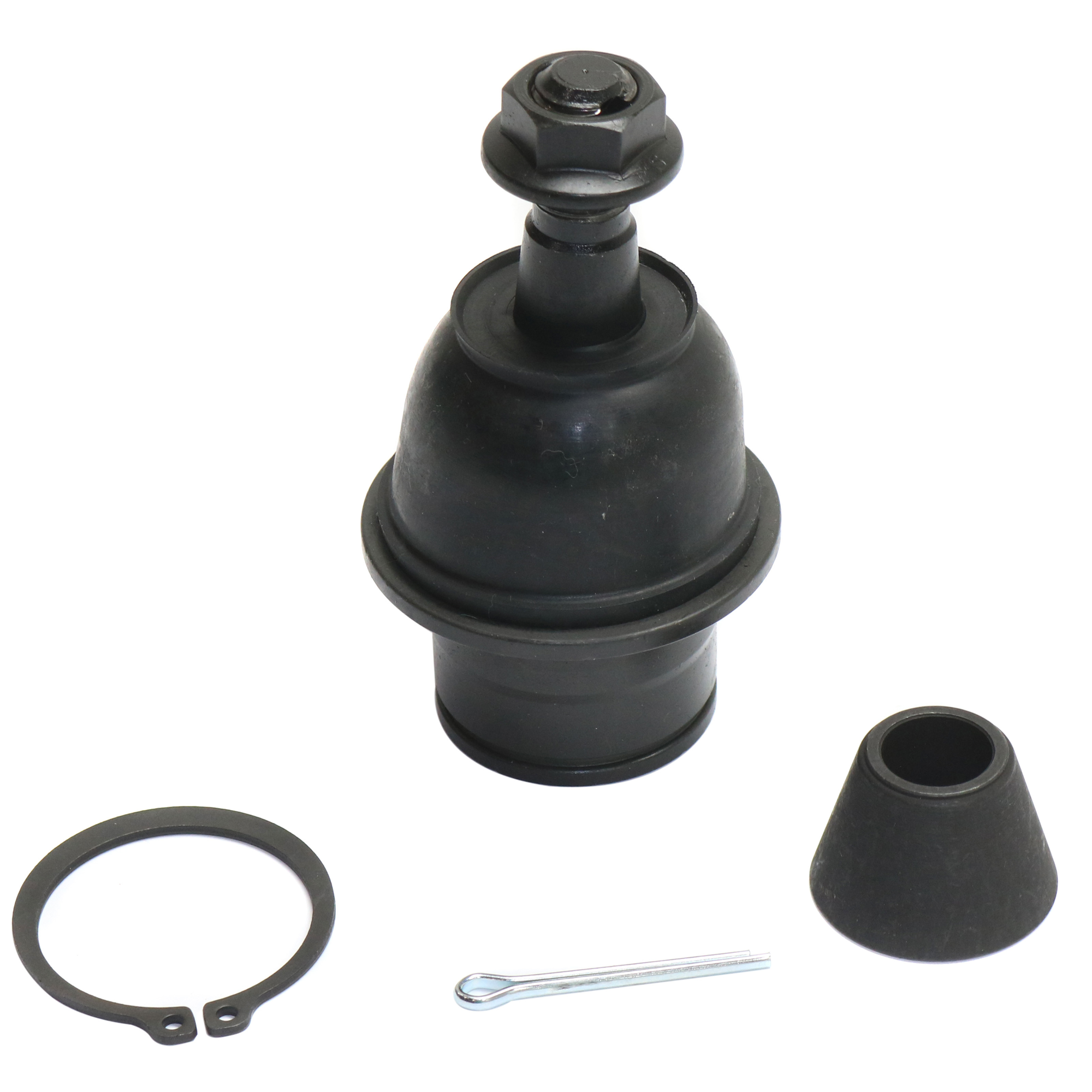





























If you are driving 60mph on t hwy & your vehicle starts shacking & you let your foot off t gas, & it stops shacking. Is it the control arm?